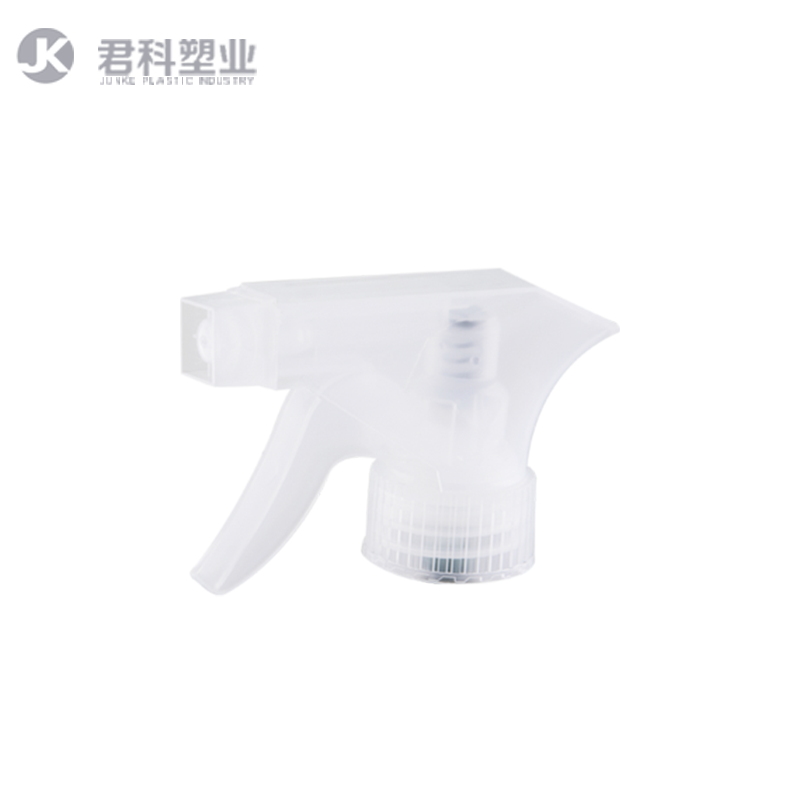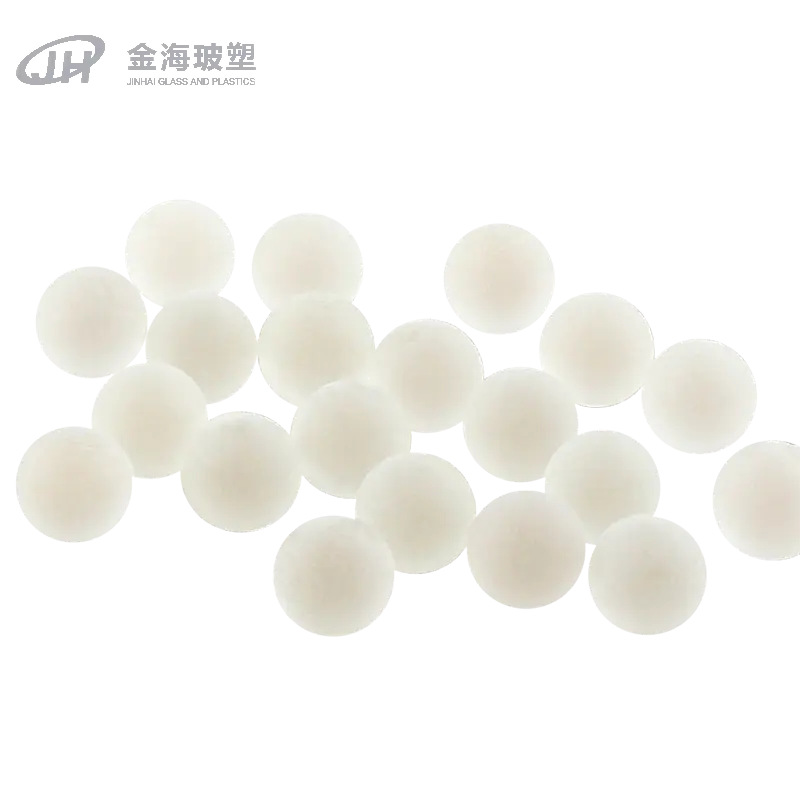Nov 17,2025
Plastic trigger sprayers are incredibly useful tools, commonly found in households, businesses, and even gardens. They are often used to dispense liquids like cleaning solutions, water for plants, or even air fresheners. However, a common problem many people face with these sprayers is leakage. This issue can occur for a variety of reasons, and understanding the causes and prevention methods can help users maintain their sprayers for longer and prevent frustration.
Content
Faulty Seals
One of the most common reasons for leaking in plastic trigger sprayers is faulty or worn-out seals. These sprayers rely on seals to prevent liquids from escaping around the nozzle or trigger. Over time, the rubber or silicone seals used in many sprayers can degrade, crack, or become dislodged, causing leaks.
How do seals work?
The seals are designed to create an airtight and watertight closure between the various components of the sprayer. When you press the trigger, the liquid is forced out of the nozzle. If the seals are not intact, some of the liquid may escape from the connections or joints, resulting in leakage.
Why do seals wear out?
There are several reasons why seals can wear out. For one, constant exposure to chemicals or cleaning products can cause the rubber to break down. In addition, physical wear and tear from frequent use can degrade the integrity of the seals. Environmental factors such as temperature fluctuations and humidity also contribute to the deterioration of seals.
How to fix it?
To prevent leaks caused by faulty seals, it’s essential to check the seals regularly. If you notice any visible cracks, tears, or signs of wear, replacing the seal is the most effective solution. Most manufacturers offer replacement seals for their sprayers, and these can be easily purchased from the manufacturer’s website or local stores.

Loose Nozzle or Trigger Mechanism
Another potential cause of leaks in plastic trigger sprayers is a loose nozzle or trigger mechanism. If the nozzle or trigger is not tightly connected to the sprayer body, liquid can escape around the edges. This can be especially common in new sprayers, as the manufacturer may not have screwed the nozzle on tightly enough during production.
Why does it happen?
Nozzles and triggers are often screwed or clipped onto the sprayer body. If these components are not securely fastened, liquid can leak from the gaps or seams. Furthermore, using the sprayer for extended periods can sometimes loosen these parts over time.
How to fix it?
To prevent leaks caused by loose nozzles, always make sure to tighten the nozzle and trigger securely. However, avoid overtightening, as this can damage the threads or cause stress on the plastic. If your sprayer uses a clip-on trigger mechanism, ensure that it is properly attached and not loose.
Incorrect Pressure Build-Up
In some cases, incorrect pressure buildup inside the sprayer can lead to leaks. If too much pressure is created inside the bottle, the liquid can find its way out of weak points, such as the nozzle or bottle cap. This can happen if the sprayer is used too aggressively or if there is a blockage in the nozzle.
Why does pressure build up?
Pressure buildup occurs when air is trapped inside the sprayer during use, especially when the trigger is pressed too forcefully. This causes the liquid to be pushed out under higher pressure, and if the sprayer isn’t designed to handle this pressure, leaks can occur. Additionally, blockages in the nozzle can prevent the liquid from flowing freely, increasing the pressure inside the bottle.
How to fix it?
To prevent excess pressure buildup, use the sprayer gently and avoid over-squeezing the trigger. If you are spraying thicker liquids, such as gel-like substances, consider using a sprayer designed for those materials. Also, make sure the nozzle is clear of any obstructions to allow for proper liquid flow.
Overfilled Bottle
An often overlooked cause of leakage is overfilling the sprayer’s bottle. When you fill the bottle beyond its maximum capacity, it can lead to increased internal pressure. This pressure may force liquid to escape through weak points, resulting in leaks.
Why does it happen?
Sprayers are designed with a specific fill capacity. Overfilling the bottle leaves little room for air to expand, which increases the risk of leaks. Moreover, if the bottle is filled to the top, the liquid can spill over the edges when the sprayer is activated, causing unnecessary mess.
How to fix it?
Always check the manufacturer’s recommended fill line before filling the bottle. This ensures that there is enough space for air to circulate and reduces the risk of leakage. If you accidentally overfill the bottle, carefully pour out the excess liquid before using the sprayer.
Clogged Nozzle
A clogged nozzle can also lead to leaks. When the nozzle or straw inside the sprayer becomes blocked by debris or dried liquid, it can create a backup of pressure that forces the liquid to leak from other parts of the sprayer.
Why does it happen?
Sprayers often dispense liquid that contains various chemicals or substances that can leave residue behind. Over time, this residue can build up in the nozzle or straw, causing it to become clogged. This clogging can create pressure buildup inside the bottle, leading to leaks.
How to fix it?
Regularly clean the nozzle to prevent clogs. If you notice that the spray is weak or uneven, the nozzle may be clogged. To clean it, remove the nozzle and soak it in warm, soapy water. You can use a pin or needle to clear any stubborn blockages in the nozzle opening.
Poor-Quality Plastic or Manufacturing Defects
Sometimes, poor-quality plastic or manufacturing defects can result in sprayers that are prone to leaking. Low-quality materials are more susceptible to breaking down, cracking, or warping, which can compromise the sprayer’s functionality.
Why does it happen?
Inexpensive sprayers are often made with lower-quality plastic, which may not be as durable as higher-quality materials. Additionally, manufacturing defects such as improper sealing or faulty assembly can lead to leaks.
How to fix it?
If you frequently experience leaks with a particular sprayer, it may be a result of poor-quality materials or a manufacturing flaw. In this case, it’s best to replace the sprayer with a higher-quality option. Look for sprayers made with durable materials like high-density polyethylene (HDPE) or polypropylene, as these are more resistant to wear and tear.
Temperature Fluctuations
Extreme temperature fluctuations can cause plastic trigger sprayers to leak. Both high and low temperatures can cause the plastic components to expand or contract, which may result in leaks.
Why does it happen?
Hot temperatures can cause plastic to soften and become more flexible, potentially allowing liquid to seep out from weak points. On the other hand, cold temperatures can cause plastic to become brittle and crack, leading to leakage. This issue is particularly common when sprayers are stored in areas where the temperature fluctuates dramatically, such as in a garage or outdoors.
How to fix it?
To prevent temperature-related leaks, store your plastic trigger sprayer in a consistent, moderate temperature. Avoid leaving it in direct sunlight or exposing it to freezing temperatures for extended periods. If you plan to store the sprayer for a long time, try to keep it in a climate-controlled area.
Common Causes and Solutions for Leaking Plastic Trigger Sprayers
| Cause of Leakage | Solution |
|---|---|
| Faulty Seals | Replace worn-out or damaged seals. |
| Loose Nozzle or Trigger | Tighten the nozzle and trigger mechanism securely. |
| Incorrect Pressure Build-Up | Use the sprayer gently and avoid over-squeezing the trigger. Clear any clogs. |
| Overfilled Bottle | Do not exceed the maximum fill line on the bottle. |
| Clogged Nozzle | Regularly clean the nozzle and use warm water to remove clogs. |
| Poor-Quality Plastic | Invest in higher-quality sprayers made from durable materials. |
| Temperature Fluctuations | Store the sprayer in a consistent temperature environment. |





















